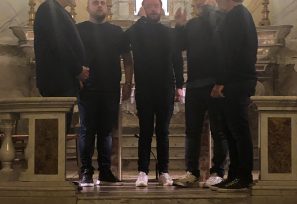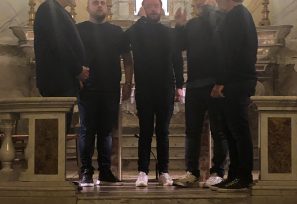The convent was founded on 27 April 1494 by the Franciscans, who only left when the Revolution happened, never to return. It is now privately owned and the owners host various religious events and other celebrations, in an attempt to breathe new life into the site.
After the dispersion of 1797 the convent and its garden were sold. In 1812 the municipalities of Costa, Occhiatana and Ville di Paraso bought the church square and the church, which was falling into disrepair. In 1870, the Capuchins were offered the square and the church by the municipalities so that they could restore it and worship there. The Capuchins set about the task and were helped by the population and in particular by Bonaventure Malaspina of Ville di Paraso. On 22 January 1872 the first mass was celebrated in the rebuilt church. In 1873 the superior of the convent bought a 100 kg bell. In the following years the pilgrimages testify to the devotion to the Virgin. The Pontiff, by a decree of 09/12/1875, granted that the solemnity of Our Lady of Lourdes could be celebrated in Tuani, the convent took the name of Our Lady of Lourdes, while the church was dedicated to St John the Baptist (Pieve San Giovanni di Tuani being part of the diocese of Marana). On 10 June 1880, as the expulsion of the religious was feared, Mr Malaspina was asked to mortgage the convent for 4000fr in order to save it. In 1903, new expulsions took place and the convent remained closed until the return of the religious in 1920. Immediately the traditions were resumed and the feast of Our Lady of Lourdes was henceforth solemnly celebrated on the first Sunday in May. On January 16, 1967, as there were too few religious, the convent was closed. It was sold to Catherine Deneuve on July 28, 1969 via a company in Liechetenstein. The festival is no longer celebrated and the convent is no longer maintained; it is finally sold in 1977 and the new owners try to bring back to life this place full of history, the festival takes place there every year with mass and procession, concerts are given. The convent was listed in the Inventaire Supplémentaire des Monuments Historiques (Supplementary Inventory of Historical Monuments) by a decree of the Ministry of Agriculture and the Environment on 30 March 1978. The bell tower was restored in 1980 and 1990, and fitted with a lightning rod. In 1999, the former gardens of the convent (Agro Santo), oak woods, chestnut trees, olive trees, springs and the built-up fountain used as a washhouse, were bought back to reconstitute the original estate.
Features
-
Visit
-
Individual visit :
-
Group visit :
-
Individual visit :
-
Spoken languages
- French
To know
-
Animals welcome
Pets not accepted








